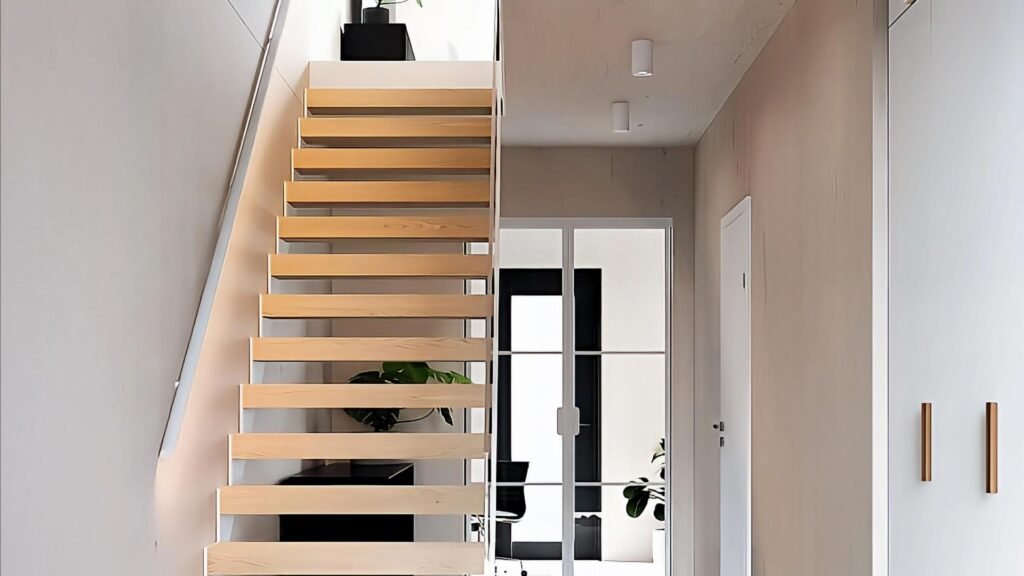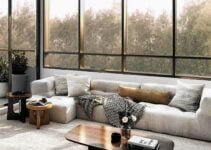Explore the evolving concept of small dreamy family homes, blending efficiency, style, and sustainability. Discover how multifunctional furniture, smart layouts, and eco-friendly designs can transform compact living spaces into cozy, functional, and eco-conscious family havens.
Introduction to Small Dreamy Family Homes
The concept of small, dreamy family homes has evolved significantly in recent years, gaining widespread popularity due to various economic, environmental, and lifestyle factors. Small homes, often characterized by their efficient use of space and charming aesthetics, resonate well with the modern family’s desire for practicality and style without the burdens of excessive square footage.

One of the primary drivers behind this trend is the rising cost of real estate in urban areas. Many families find smaller homes to be a more economical option that still meets their needs. Additionally, smaller homes generally incur lower utility and maintenance costs, making them financially appealing. Beyond economics, the environmental benefits of small homes are also noteworthy. These homes tend to have a smaller carbon footprint, requiring less energy for heating, cooling, and lighting, which aligns with the growing focus on sustainable living.
Please read our article watch the newly uploaded video from our YouTube channel:
“Grig Stamate – Interior Design Solutions”
https://www.youtube.com/@GrigStamate
Small Dreamy Family Homes – New Creative Interior Design Ideas, #13 (video)
Here, you can see other related videos from our channel:
Small Dreamy Family Homes – Creative Interior Design Ideas, #12 (video)
Small Dreamy Family Homes – Creative Interior Design Ideas, #11 (video)
From a lifestyle perspective, small homes offer a more intimate and cozy living environment. With limited space, families are encouraged to declutter and prioritize what truly matters, fostering a minimalist lifestyle that emphasizes quality over quantity. The design challenge of making a compact space both functional and aesthetically pleasing has given rise to innovative interior design solutions that maximize utility while creating a warm and inviting atmosphere.
Essentially, the essence of small dreamy family homes lies in their ability to balance functionality and beauty. Despite their limited size, these homes can be designed to accommodate the diverse needs of a family, providing comfort, efficiency, and a touch of dream-like charm. Through clever design strategies such as multi-functional furniture, smart storage solutions, and thoughtful layout planning, even the smallest homes can become a haven that reflects the personality and lifestyle of its inhabitants.
Maximizing Space: Smart Layout Ideas
Creating a dreamy family home within a small space involves a blend of ingenuity and thoughtful design. One cornerstone of optimizing space is adopting open-plan layouts. By eliminating unnecessary walls, the home benefits from an unimpeded flow of light and air, making any area feel more spacious. An open-plan kitchen, living, and dining area is the epitome of communal living; it encourages family interaction and ensures that no single room feels isolated or hemmed in.
Multifunctional furniture is another brilliant solution for compact homes. Think of sofas that convert to beds, coffee tables with hidden storage, or dining tables with fold-out sections. These pieces of furniture adapt to various needs, playing multiple roles while occupying minimal space. A sofa bed, for instance, serves as a cozy seating area during the day and a comfortable bed at night, offering flexibility especially in homes without a dedicated guest room.
Clever storage solutions cannot be overlooked when aiming to maximize space. Vertical storage is particularly effective, utilizing wall-mounted shelves, cabinets, and hooks to free up floor space. Building storage solutions into nooks and underused areas—such as beneath stairs or within built-in window seats—also adds significant value. Integrating storage into furniture, such as beds with drawers underneath or ottomans with storage compartments, ensures that family belongings remain organized and out of sight, keeping the living space tidy and uncluttered.
The importance of flow and usability should not be underestimated. Each space should seamlessly transition into the next, allowing family members to move easily throughout the home. A well-considered layout ensures that no area feels neglected or overcrowded. For instance, employing sliding doors instead of traditional ones can save space and prevent obstacles in narrow hallways or cramped rooms.
Incorporating these creative layout solutions ensures that a small family home not only meets functional needs but also provides a cozy, welcoming environment. By focusing on open-plan designs, multifunctional furniture, and clever storage, homeowners can achieve a harmonious balance between efficiency and comfort without feeling confined.
Creating a bright and airy interior in small dreamy family homes primarily hinges on the strategic use of lighting. Thoughtfully implemented lighting techniques can significantly transform a space, making it feel larger and more welcoming. Natural light serves as the most vital component. Utilizing windows, skylights, and glass doors allows sunlight to permeate the space, facilitating an expansive and warm atmosphere.
Maximizing the natural light involves more than just increasing window size. Thin, light-colored drapes or sheer blinds offer privacy while allowing light to filter through. Reflective surfaces, such as mirrors and glass furniture, further amplify the effect by bouncing light around the room. Placing mirrors opposite windows can effectively double the natural light.
Artificial lighting is equally critical in enhancing small family homes. A layered approach—combining ambient, task, and accent lighting—ensures a balanced and functional illumination. Ambient lighting provides the overall brightness a room needs, commonly delivered through ceiling fixtures, chandeliers, and wall-mounted lights. Soft-white LED bulbs are ideal for creating warm, pleasant light without overwhelming the space.
Task lighting serves specific purposes, such as reading or cooking, and is best achieved with adjustable fixtures like table lamps, floor lamps, or under-cabinet lights. These should be strategically placed where more focused light is required, contributing to both practicality and coziness.
Accent lighting adds depth and dimension to the room, highlighting architectural features, artwork, or decorative elements. Track lighting, spotlights, and wall sconces directed at specific points create focal areas and introduce a subtle layer of brightness. Accent lighting can also be used to emphasize textures and materials that reflect light, such as glossy finishes or metallic accents.
In small family homes, color palettes and materials play a crucial role in optimizing the impact of lighting. Light colors, such as whites, pastels, and soft neutrals, inherently reflect more light, making spaces feel larger and brighter. Integrating reflective materials like glass, metallic finishes, and light wood enhances this effect, contributing to an airy atmosphere.
Ultimately, combining natural and artificial lighting techniques with thoughtful use of colors and materials can create a bright and airy interior, transforming small dreamy family homes into inviting and spacious retreats.
Color Schemes and Textures: Adding Depth and Personality
In interior design, color schemes and textures play pivotal roles in transforming small spaces into dreamy family homes. Thoughtfully chosen color palettes can significantly expand the perception of a room’s size while highlighting the family’s unique personality. When selecting a color palette, consider light, neutral shades such as whites, beiges, and pale greys. These hues not only open up the space but also form a versatile backdrop for adding personalized accents.
Implementing a monochromatic color scheme can also enlarge a room’s feel. By maintaining different tones and shades of a single color, you can create a harmonious, uncluttered look that exudes sophistication. Alternatively, incorporating pops of color through accessories and decor can inject life into the space, ensuring it reflects the family’s dynamic nature. For instance, scatter vibrant cushions on a neutral sofa or hang a bold, colorful piece of artwork on a plain wall.
Textures are equally crucial in adding depth and interest to small spaces. Textural elements can be introduced through a variety of means such as textiles, wall treatments, and decor items. Plush rugs, soft throws, and rich upholstery materials can instill a sense of coziness, whereas sleek, modern finishes such as glass and metal can add a contemporary feel. Utilizing a mix of these textures in moderation ensures a balanced and inviting environment.
Wall treatments also offer an excellent opportunity to add texture. Consider using patterned wallpapers, reclaimed wood panels, or even textured paint techniques to add a compelling visual dimension. Even smaller elements like ceramic vases, woven baskets, and metallic frames contribute to the tactile richness of a room.
In conclusion, by carefully selecting colors and textures, you can create a small family home that not only feels larger but also brims with character and warmth. These thoughtful design choices will help transform your space into a truly dreamy abode.
Furniture Selection: The Right Fit for Small Spaces
When designing a small dreamy family home, selecting the right furniture is paramount. The key lies in choosing pieces that are appropriately scaled to fit the limited space without compromising on comfort or style. Proportion is crucial; oversized furniture can overwhelm a small room, making it feel cramped and restricting movement. Instead, opt for slimline furniture that offers both functionality and aesthetic appeal.
Multifunctional furniture is another essential component of well-designed small homes. Pieces that serve multiple purposes help to maximize space utilization. For instance, a sofa bed provides seating during the day and converts into a sleeping area at night, ideal for accommodating guests. Similarly, a dining table with built-in storage or an ottoman that doubles as a coffee table and extra seating can significantly enhance a room’s practicality.
Balancing comfort and style is essential in crafting a home that feels inviting and visually pleasing. Look for furniture that offers ergonomic comfort without sacrificing modern design elements. Stylish, minimalist furniture can make a small space feel open and airy while adding a contemporary flair. Incorporating pieces with clean lines and understated elegance can create a cohesive look that doesn’t overpower the senses.
For sourcing space-saving pieces, consider visiting specialty furniture stores or online marketplaces that focus on compact home living. Websites such as IKEA, Wayfair, or Amazon offer a plethora of solutions designed specifically for small spaces. Alternatively, investing in custom furniture can provide tailored solutions that fit the unique dimensions and needs of your home. Custom cabinets, built-in desks, and bespoke storage solutions can address tricky spaces, ensuring every square foot is used efficiently.
Ultimately, selecting the right furniture for small dreamy family homes involves a thoughtful approach that prioritizes proportion, multifunctionality, and the perfect blend of comfort and style. By carefully curating each piece, you can transform even the smallest spaces into functional, stylish, and welcoming homes.
Integrating personal touches into your living space is a crucial component in transforming a house into a home. This is especially true for small family homes, where the blending of character and functionality becomes paramount. Infusing character into small spaces can be achieved without the area feeling overwhelmed or cluttered through the careful display of family photos, heirlooms, and collections.
Start by selecting a few meaningful pieces, rather than trying to display everything at once. For instance, a curated gallery wall of family photos can create a focal point that personalizes your space without dominating it. Utilize a variety of frame styles and sizes to add visual interest, and consider using ledges rather than nails to allow for easier rearrangement when you want to update the display.
Heirlooms and collections also play a significant role in adding charm. Displaying small collectibles in glass-front cabinets or shadow boxes can preserve their visibility while maintaining organization. Integrating these items into your daily decor, such as using a treasured vase as a functional centerpiece, provides continual, subtle reminders of your heritage and encourages a sentimental connection to your surroundings.
Additionally, DIY projects and custom decor contribute uniquely to your home’s character. Crafting custom pieces—such as hand-painted signs, repurposed furniture, or bespoke shelving—can add both style and sentimental value. These personalized elements not only enhance the aesthetic appeal but also create talking points and memories. For instance, designing and building a small bookshelf from reclaimed wood can marry form and function while showcasing your craftsmanship.
In summary, achieving a balance between personal touches and maintaining an organized, breathable space can transform small family homes into dreamy, character-filled havens. By thoughtfully displaying photos, heirlooms, and custom decor, and by integrating DIY projects, you can ensure your home is both functional and enriched with personal stories.
Green Living: Sustainable and Eco-Friendly Design Ideas
In the realm of contemporary interior design, sustainability has emerged as a pivotal concept, significantly shaping the aesthetics and functionality of small family homes. Implementing eco-friendly interior design ideas is not only aligned with environmental conservation efforts but also augments the overall health and well-being of the home’s inhabitants. Embracing green living manifests through various creative approaches, each contributing to a more sustainable lifestyle.
One of the foremost strategies in eco-friendly design is the use of reclaimed or recycled materials. Furniture crafted from reclaimed wood or repurposed metal offers a unique charm while reducing waste. These materials often tell a story and add character to a space, making them both environmentally-friendly and aesthetically pleasing. Incorporating recycled glass countertops or tiles can further enhance the visual appeal, providing a blend of modernity and sustainability.
Incorporating houseplants is another brilliant eco-friendly design idea. Houseplants not only add a touch of natural beauty but also improve indoor air quality by filtering toxins. Species such as snake plants, spider plants, and peace lilies are particularly effective at purifying the air. Moreover, plants introduce a calming element to the home environment, which can be especially beneficial in small family homes where space may be limited.
Energy efficiency is a crucial aspect of sustainable living. Choosing energy-efficient appliances and lighting can significantly reduce a household’s carbon footprint. ENERGY STAR-rated appliances, for instance, consume less energy and water without compromising performance. Additionally, switching to LED lighting or smart lighting systems can lower energy consumption and provide customizable lighting options to suit different moods and activities.
The environmental benefits of adopting a green lifestyle are profound. Reduced waste, decreased energy consumption, and improved air quality collectively contribute to a healthier planet. On a personal level, these sustainable choices also promote improved health outcomes by minimizing exposure to harmful substances and creating a more serene and nature-rich living environment.
By integrating eco-friendly interior design ideas, families can create small dreamy homes that are not only beautiful and functional but also kind to the environment. This conscious approach to living underscores the growing importance of sustainability in modern home design.
Case Studies: Real Life Examples of Small Dreamy Family Homes
Exploring real-life transformations, we uncover how small family homes can be creatively and effectively designed. These case studies will highlight different styles and locations to underscore the flexibility of small home interior design.
1. Scandinavian Serenity in Stockholm
This 800 sq ft apartment in the heart of Stockholm epitomizes minimalist Scandinavian design. Before the redesign, it was a cramped, dark space with limited natural light. By incorporating light-colored walls, functional furniture, and strategically placed mirrors, the home now boasts an airy and spacious feel. The open-floor concept further enhances the sense of roominess. Homeowner interviews reveal an appreciation for the practical layout, especially the multifunctional furniture that transitions smoothly from dining to working space.
2. Rustic Charm in Texas
In the rural expanses of Texas, a 950 sq ft home has been transformed into a cozy retreat brimming with rustic charm. The original home was outdated and cluttered. Opting for a farmhouse style, the homeowners introduced elements such as reclaimed wood beams, shiplap walls, and a neutral color palette. These changes invite warmth and character. Interviews with the family highlight their love for the open kitchen and living room, conducive to family gatherings, and the intelligently designed built-in storage solutions.
3. Modern Elegance in Tokyo
A 700 sq ft apartment in Tokyo showcases a modern approach to small home living. The initial layout lacked fluidity, making the space feel fragmented. By adopting a modern minimalist design, the apartment now features sleek lines, minimalistic furniture, and a cohesive color scheme of whites, grays, and blacks. Innovative Japanese sliding doors replace traditional doors to maximize space. Homeowner insights reflect high satisfaction with the new design’s elegance and efficiency.
Each of these small family homes illustrates the potential for creative interior design to elevate limited spaces, yielding small dreamy family homes that don’t compromise on style or functionality. The mix of styles—Scandinavian, rustic, and modern—alongside different geographic settings, reinforces the adaptable nature of these new and creative interior design ideas.
Other related posts from our website:
Let’s see here, three of them:
https://howtobuildahouseblog.com/small-dreamy-family-homes-new-creative-interior-design-ideas-12/
https://howtobuildahouseblog.com/small-dreamy-family-homes-new-creative-interior-design-ideas-10/
Thank you so much for your attention.
We also sincerely hope you like our ideas from this post, and you have also enjoyed our uploaded YouTube video.
See you next time at another article. Thank you so much for your time. Bye now!



No Responses